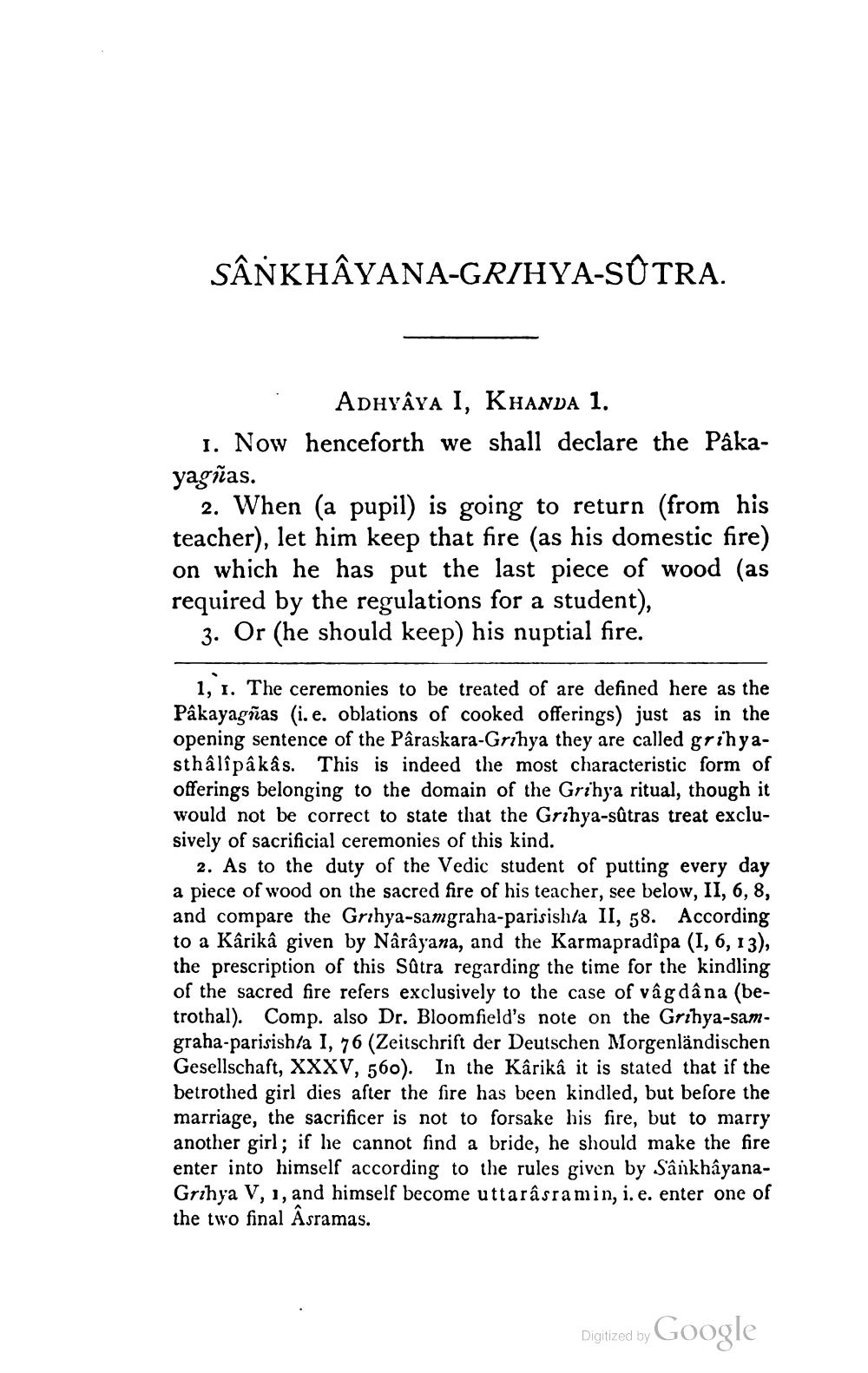________________
SÂNKHẤYANA-GR/HYA-SÚTRA.
ADHYAYA I, KHANDA 1. 1. Now henceforth we shall declare the Pâkayagñas.
2. When (a pupil) is going to return (from his teacher), let him keep that fire (as his domestic fire) on which he has put the last piece of wood (as required by the regulations for a student),
3. Or (he should keep) his nuptial fire.
1, 1. The ceremonies to be treated of are defined here as the Pâkayagñas (i. e. oblations of cooked offerings) just as in the opening sentence of the Paraskara-Grihya they are called grihyasthâlîpâkâs. This is indeed the most characteristic form of offerings belonging to the domain of the Grihya ritual, though it would not be correct to state that the Grihya-sûtras treat exclusively of sacrificial ceremonies of this kind.
2. As to the duty of the Vedic student of putting every day a piece of wood on the sacred fire of his teacher, see below, II, 6, 8, and compare the Grihya-samgraha-parisishta II, 58. According to a Kârikâ given by Nârâyana, and the Karmapradîpa (I, 6, 13), the prescription of this Sutra regarding the time for the kindling of the sacred fire refers exclusively to the case of vâg dâna (betrothal). Comp. also Dr. Bloomfield's note on the Grihya-samgraha-parisishta I, 76 (Zeitschrift der Deutschen Morgenländischen Gesellschaft, XXXV, 560). In the Karikâ it is stated that if the betrothed girl dies after the fire has been kindled, but before the marriage, the sacrificer is not to forsake his fire, but to marry another girl; if he cannot find a bride, he should make the fire enter into himself according to the rules given by SânkhayanaGrihya V, 1, and himself become uttarasramin, i.e. enter one of the two final Asramas.
Digitized by Google




